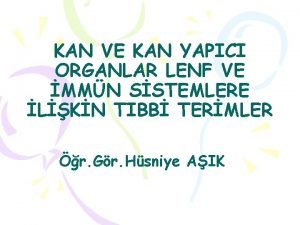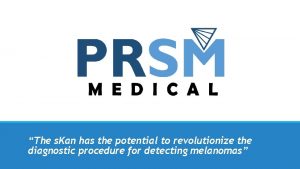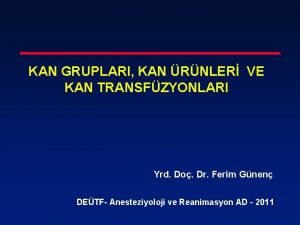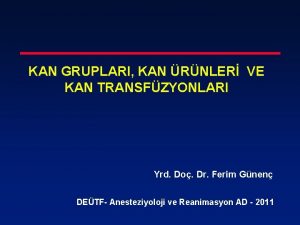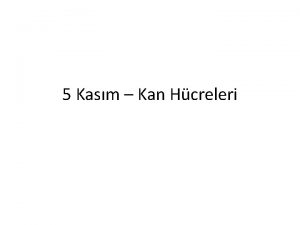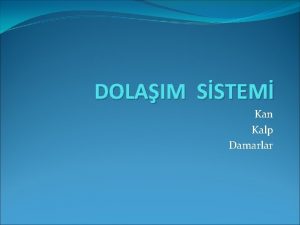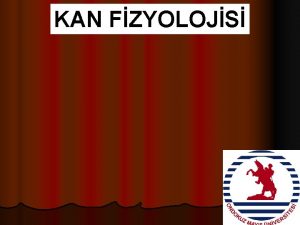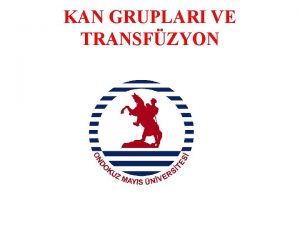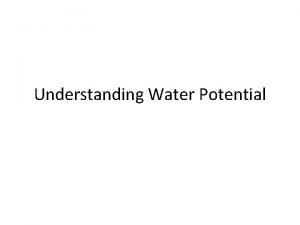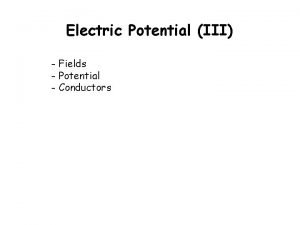The s Kan has the potential to revolutionize

















- Slides: 17

“The s. Kan has the potential to revolutionize the diagnostic procedure for detecting melanomas”

The Numbers 1 in 5 North Americans will develop skin cancer in their lifetime 65% Of all skin cancer deaths are due to melanoma 10, 000 Deaths from to melanoma per year in the USA There are more cases of skin cancer than breast, prostate, lung and colon cancers combined

What is Melanoma? q q q A form of skin cancer that originates from the pigment-producing cells known as melanocytes Commonly characterized by the appearance of a mole on the skin Stages are defined by how deep in the skin the melanoma has grown Can metastasize, spreading to other parts of the body through the lymph nodes or blood vessels Hard to identify compared to other types of skin cancer

Early Detection is Key 98% Melanoma has a 5 -year survival rate of 98% when found early But. . . 18% This drops to 18% if it spreads to other parts of the body. “Although highly treatable in its early stages, melanoma can be fatal if not detected early. ” - Marnie B. Nussbaum, M. D. F. A. A. D.

Our Motivation It is saddening and unfortunate when a life is lost due to a deadly disease like cancer. But what is more saddening and unacceptable is the loss of life when it could have been prevented.

Current Clinical Procedure Notice Abnormality 1 2 • Self. Examination • Physician Check -up Visit GP • Conduct visual inspection • Refer to a specialist 3 Referral to Dermatologist • Conduct visual inspection and special tools • Decide if biopsy is necessary 4 Biopsy • Sample sent to Medical Lab • Diagnosis received in approx. 2 weeks

Shortcomings 1 Current methods can miss melanomas at an early stage 2 GPs rely on personal experience which can vary greatly 3 Most biopsies are unnecessary (1 in 30 test positive) 4 Other screening tools are expensive 5 Effectiveness of dermatoscopes is highly user dependent 6 Limited access to specialists and equipment in rural areas

What does a solution need? Provide increased sensitivity and specificity in comparison with current methods Usable in a time-efficient manner comparable to that required to perform a biopsy Have reimbursements by insurance if proven to decrease the number benign biopsies performed Be accessible to a wide range of patients and physicians, including non-dermatologists


Research Studies Research from John Hopkins University used infrared cameras to confirm temperature differences between melanoma and healthy skin during thermal recovery National Research Council Canada – Institute for Biodiagnostics showed significant differences between normal skin and skin lesions in areas of near-infrared spectrum using spectroscopy techniques. Greater Blood Supply Higher Cellular Metabolic Rate Slower Homeostatic Response Accelerated Thermal Recovery

How The s. Kan Works 1. Lesion and surrounding area is cooled 2. A thermistor patch is applied to the skin and connected to The s. Kan 3. Data is acquired for approx. 1 minute during thermal recovery 4. The s. Kan creates a thermal map of the region of skin 5. The s. Kan provides a risk assessment based on detected temperature variations

The s. Kan addresses the core challenges Objective and standardized means of assessment Improved accuracy Easy to use Fast and simple testing process which a GP or nurse can perform Financial incentive for Insurance to support payment Low cost Affordable for GPs, allowing non-dermatologists to perform screening Accessible

Future Procedure 1 Notice Abnormality • Self. Examination • Physician Checkup 2 Visit GP • Conduct visual inspection • Refer to a specialist 3 Dermatologist Referral • Conduct visual inspection and/or special tools • Decide if biopsy is necessary 4 Biopsy • Sample sent to Medical Lab • Diagnosis received in approx. 2 weeks

The Impact Shortcomings q Current methods can miss melanoma at an early stage q GPs rely on personal experience which can vary greatly q Most biopsies are unnecessary (1/30 test positive) q Other screening tools are expensive q Effectiveness of dermatoscopes is highly user dependant q Limited access to specialists and equipment in rural areas Improvements ü The s. Kan can be integrated into an early stage in the diagnostic stage ü The s. Kan provides a standardized result ü The s. Kan gives physicians additional confidence in their decision to take a biopsy ü The s. Kan is low cost ü The s. Kan can be used effectively with minimal training ü Portability of the s. Kan allows medical professionals to bring device to rural visits ü The s. Kan allows other medical professionals to perform the test

Our Journey October 2016 Project Initiation March 2017 The Forge Start Up Competition April 2017 Mc. Master Engineering Expo Day July 2017 Forge Summer Accelerator Program November 2017 International James Dyson Award

PRSM Rotimi Fadiya Prateek Mathur Michael Takla Shivad Bhavsar

THANK YOU prsm. medical@gmail. com
 Thrombocytus
Thrombocytus Graded potential vs action potential
Graded potential vs action potential Electric potential energy definition
Electric potential energy definition Why is water potential measured in pascals
Why is water potential measured in pascals Neuromuscular junction
Neuromuscular junction Nerve action potential
Nerve action potential Electric potential energy and potential difference
Electric potential energy and potential difference Osmotic potential vs water potential
Osmotic potential vs water potential V = pe/q
V = pe/q Osmotic potential vs water potential
Osmotic potential vs water potential Action potential resting potential
Action potential resting potential Define graded potential
Define graded potential Electric potential and potential difference
Electric potential and potential difference Source of bioelectric potential isin nature.
Source of bioelectric potential isin nature. Electrical potential
Electrical potential How to calculate solute potential
How to calculate solute potential Sales potential vs market potential
Sales potential vs market potential Action potential resting potential
Action potential resting potential
